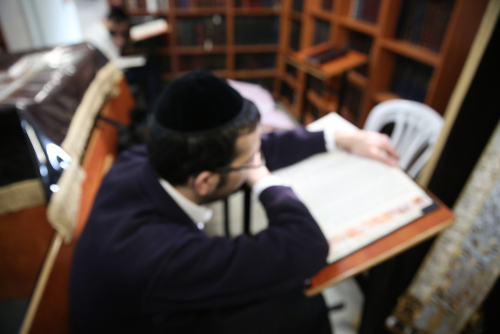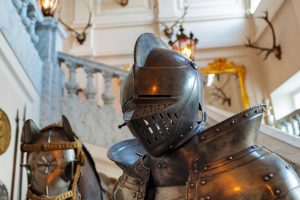Ask the Rabbi with Rabbi Chaim Mintz
Does the “evil eye” exist? If it does, what is it, and what can we do to protect ourselves from it? There are people who wear amulets around their necks, like the Hamsa hand or a mezuzah. Is there anything wrong with that?
Rabbi Chaim Mintz responds:
The Evil Eye is Real
The evil eye, or ayin hara as we call it, does exist. When one person looks at another’s successes and is overcome with jealousy and even hatred toward him, this generates the “evil eye,” and can cause harm to the one being envied.
Torah and Mitzvot – Our Shield
However, ayin hara can only harm a person if he has sinned and is anyway deserving of punishment. In such cases, the danger is that the ayin hara could hasten the onset of the punishment, becoming the vehicle through which Hashem punishes a person for his sins. But if a person is not deserving of punishment, ayin hara cannot harm him.
Therefore, the best protection against an evil eye is to be careful not to sin! Study Torah, keep the mitzvot, and be a spiritually uplifted person. Ayin hara is like a bullet. A bullet can kill, but if the victim has a bulletproof shield, he is protected. Similarly, Torah and mitzvot are our shield from ayin hara.
Kamiya or Sorcery?
Some people attempt to “shield” themselves from ayin hara and give themselves “good luck” by using amulets and charms. But you have to be extremely careful. There is such a thing as a real amulet, called a kamiya, and they have been around for thousands of years. If it is based on holy sources, written by a Jewish person who understands what ayin hara is all about, and who is knowledgeable in the appropriate combinations of Hebrew words, it can have an impact in preventing the evil eye from harming a person. In such cases, it can be acceptable.
However, if it does not come from holy sources, we don’t believe in “good luck charms” helping people. People have picked these things up from the non-Jewish cultures around them. And not only do these charms not work, they are also problematic. The Torah forbids us from practicing sorcery picked up from non-Jewish cultures (see Parshat Shoftim 18:9-12).
Wearing Mezuzahs – a Halachic Problem
Some people have started wearing mezuzahs around their necks for good luck, but we don’t believe that this provides protection. The purpose of a mezuzah is to remind us of Hashem. We place it on our door with the Shema in it, reminding us that Hashem is One and that we should love Him and keep His commandments. Every time we walk into the house, we should look at it and remember to keep His mitzvot in the house, and when we walk out of the house, it reminds us to keep His mitzvot outside. In fact, wearing a mezuzah can lead to halachic problems, because it is forbidden to bring writings that contain words of Torah and Hashem’s name into unholy places, such as a bathroom.
You Want Protection Against Ayin Hara? Act Properly!
I imagine Hamsa hands are similar. Although they are popular among Middle Eastern people, I don’t see Sephardic rabbis and their students wearing them. It seems to be a more modern fad, similar to wearing a mezuzah. I assume Sephardic rabbis would say the same thing: If you want protection, act and behave properly. Just wearing charms won’t help.
In short: Ayin hara is real and can harm a person when jealousy and hatred are aroused toward him, but only when deserving of punishment due to sin. The best protection against the evil eye is adhering to Torah and mitzvot. There are real amulets, but if they come from unholy sources they won’t help, and can fall under the prohibition of sorcery. Wearing a mezuzah or Hamsa hand doesn’t provide protection.
Have another question to ask a rabbi? You can ask Rabbi Mintz your own question at asktherabbi@oorah.org, or head to oorah.org/asktherabbi/ to watch the latest Q&As or join Ask the Rabbi Live, Tuesdays at 9PM ET.


